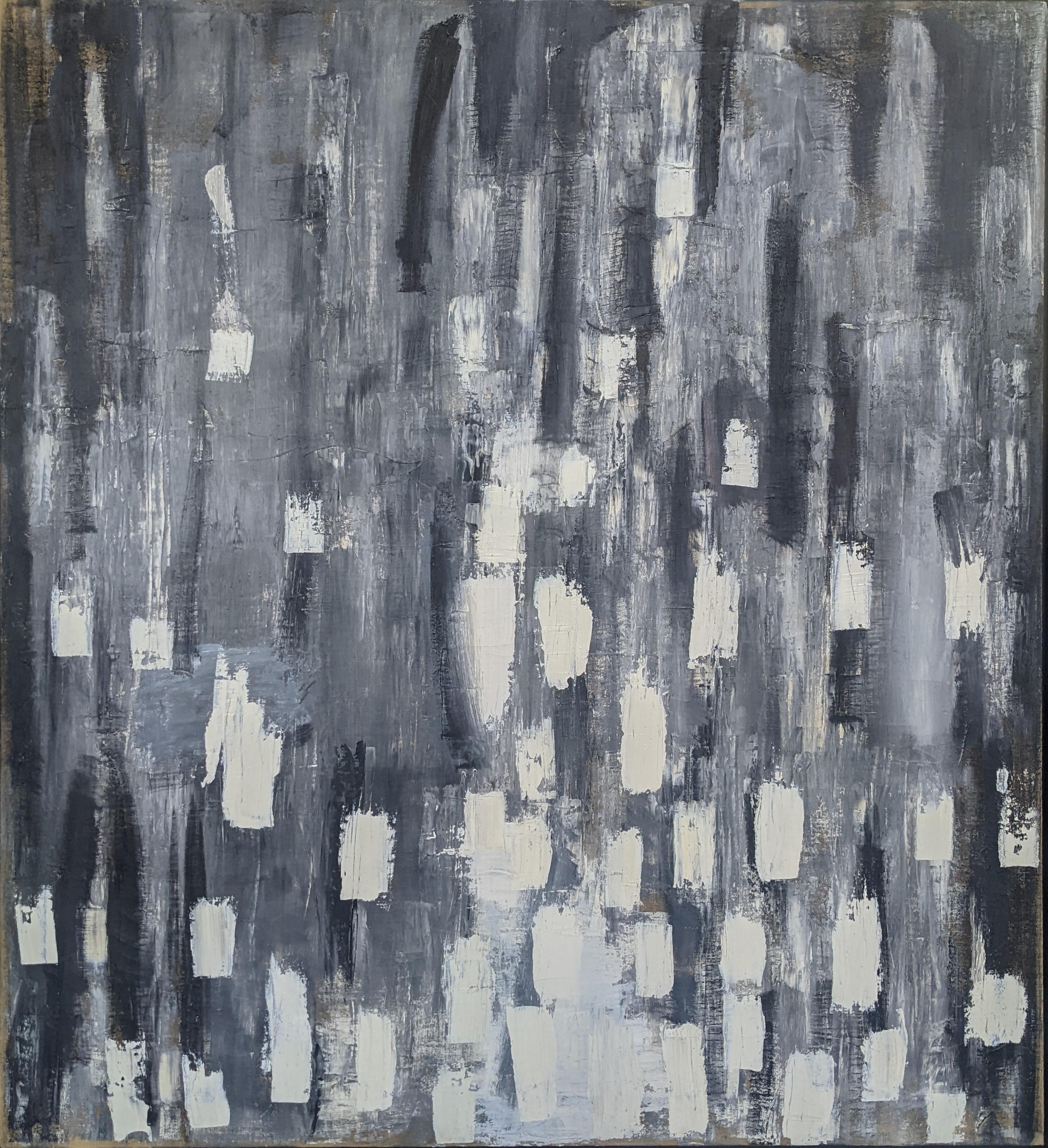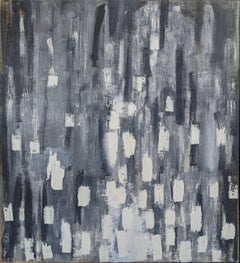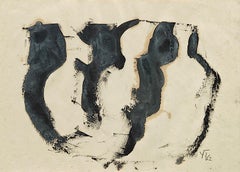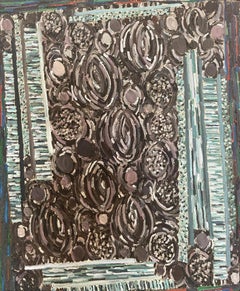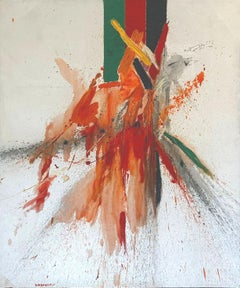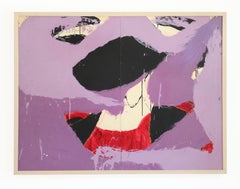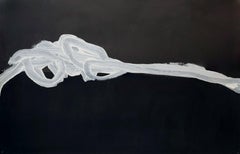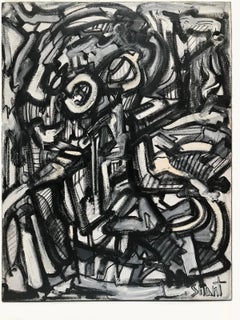Items Similar to "Untitled" Norman Bluhm, circa 1960 Abstract Black and White Composition
Want more images or videos?
Request additional images or videos from the seller
1 of 8
Norman Bluhm"Untitled" Norman Bluhm, circa 1960 Abstract Black and White Compositioncirca 1960
circa 1960
$15,000
£11,365.34
€13,040.83
CA$21,107.42
A$23,202.86
CHF 12,194.36
MX$281,767.26
NOK 152,121.58
SEK 144,124.50
DKK 97,327.03
About the Item
Norman Bluhm
Untitled, circa 1960
Signed lower right
Oil on paper laid down on board
22 x 30 inches
Norman Bluhm (1921-1999) was an American Abstract Expressionist celebrated for creating paintings with bold, energetic brushwork and colorful, voluptuous forms. Born in Chicago, IL, Bluhm studied architecture with Mies van der Rohe. In 1948, after serving as a fighter pilot in World War II, Bluhm moved to Paris, where he studied at the Ecoled des Beaux-Arts and associated with Joan Mitchell, Sam Francis and Alberto Giacometti. After moving to New York in 1956, he joined a circle of action painters including Franz Kline, Robert Motherwell, Ad Reinhardt, Willem de Kooning and showed at the Leo Castelli Gallery.
Prior to and after his studies, Bluhm was a member of the Air Force and served in World War II. After World War II, he lived in Paris with other hopeful American writers and artists of the expatriate scene. There he developed an interest in nude painting.
In 1956 he moved to New York. The Cedar Tavern was a favorite gathering place where he convened with other painters and writers, such as Frank O'Hara, Franz Kline, William de Kooning, and Jackson Pollock. Among the work of this noted group were the twenty-six Bluhm-O'Hara spontaneous poem paintings, composed in Bluhm's studio atop the old Tiffany Glass Building in 1960.
The Corcoran Gallery in Washington, D.C. exhibited Bluhm's work in his first museum show in 1969. During the 1960s and 1970s, his art created an atmosphere of violence, with a large paint-soaked brush, often using blues, pinks, purples and greens. His work which featured webs of jagged marks, cascading drips and violent splatters of paint, increasingly took on the energy and scale of abstract expressionism. Later his violent outlook changed, as did his style. He has exhibited his works throughout the United States and Europe.
- Creator:Norman Bluhm (1921-1999, American)
- Creation Year:circa 1960
- Dimensions:Height: 22 in (55.88 cm)Width: 30 in (76.2 cm)
- More Editions & Sizes:Unique piecePrice: $15,000
- Medium:
- Movement & Style:
- Period:
- Condition:
- Gallery Location:New York, NY
- Reference Number:1stDibs: LU1841214710122
Norman Bluhm
Norman Bluhm (1921-1999) was an American Abstract Expressionist celebrated for creating paintings with bold, energetic brushwork and colorful, voluptuous forms. Born in Chicago, IL, Bluhm studied architecture with Mies van der Rohe. In 1948, after serving as a fighter pilot in World War II, Bluhm moved to Paris, where he studied at the Ecoled des Beaux-Arts and associated with Joan Mitchell, Sam Francis and Alberto Giacometti. After moving to New York in 1956, he joined a circle of action painters including Franz Kline, Robert Motherwell, Ad Reinhardt, Willem de Kooning and showed at the Leo Castelli Gallery. Prior to and after his studies, Bluhm was a member of the Air Force and served in World War II. After World War II, he lived in Paris with other hopeful American writers and artists of the expatriate scene. There he developed an interest in nude painting. In 1956 he moved to New York. The Cedar Tavern was a favorite gathering place where he convened with other painters and writers, such as Frank O'Hara, Franz Kline, William de Kooning, and Jackson Pollock. Among the work of this noted group were the twenty-six Bluhm-O'Hara spontaneous poem paintings, composed in Bluhm's studio atop the old Tiffany Glass Building in 1960. The Corcoran Gallery in Washington, D.C. exhibited Bluhm's work in his first museum show in 1969. During the 1960s and 1970s, his art created an atmosphere of violence, with a large paint-soaked brush, often using blues, pinks, purples and greens. His work which featured webs of jagged marks, cascading drips and violent splatters of paint, increasingly took on the energy and scale of abstract expressionism. Later his violent outlook changed, as did his style. He has exhibited his works throughout the United States and Europe.
About the Seller
5.0
Platinum Seller
Premium sellers with a 4.7+ rating and 24-hour response times
Established in 2022
1stDibs seller since 2022
122 sales on 1stDibs
Typical response time: <1 hour
- ShippingRetrieving quote...Shipping from: New York, NY
- Return Policy
Authenticity Guarantee
In the unlikely event there’s an issue with an item’s authenticity, contact us within 1 year for a full refund. DetailsMoney-Back Guarantee
If your item is not as described, is damaged in transit, or does not arrive, contact us within 7 days for a full refund. Details24-Hour Cancellation
You have a 24-hour grace period in which to reconsider your purchase, with no questions asked.Vetted Professional Sellers
Our world-class sellers must adhere to strict standards for service and quality, maintaining the integrity of our listings.Price-Match Guarantee
If you find that a seller listed the same item for a lower price elsewhere, we’ll match it.Trusted Global Delivery
Our best-in-class carrier network provides specialized shipping options worldwide, including custom delivery.More From This Seller
View All"Untitled" Calvert Coggeshall, Abstract Expressionism, Black, Grey, and White
Located in New York, NY
Calvert Coggeshall
Untitled, 1958
Oil on Canvas
38 H. x 36 W. inches
Provenance:
The artist's estate
Calvert Coggeshall worked as an abstract painter and interior designer primarily in Maine and New York City. From 1951 to 1978, he exhibited regularly with the Betty Parsons Gallery, and later with its successor, the Jack Tilton Gallery.
Born in Whitesboro, New York, Coggeshall started his career as an interior designer, working on commissions for clients in the New York City area. He later consulted on the interior designs for Henry Dreyfuss' line of cruise/cargo ships called American Export, popular from the 1940s through the 1960s. In the 1940s, he also worked with inventor Arthur Young to design interiors for the first full-sized scale of Bell helicopter models...
Category
1950s Abstract Abstract Paintings
Materials
Canvas, Oil
"Untitled" Yvonne Thomas, Female Abstract Expressionist, Black and White Work
By Yvonne Thomas
Located in New York, NY
Yvonne Thomas
Untitled, 1962
Signed with initials and dated lower right
Oil on paper
8 3/4 x 12 inches
Yvonne Patricia Thomas, born in Nice, France, in 1913, immigrated to the Unit...
Category
1960s Abstract Expressionist Abstract Drawings and Watercolors
Materials
Paper, Oil
"Twilight Imagery" Lynne Drexler, 1976 Abstract Dark Chromatic Composition
By Lynne Drexler
Located in New York, NY
Lynne Drexler
Twilight Imagery, 1976
Signed and dated on the reverse
Oil on canvas
30 1/2 x 22 1/2 inches
Southern-born Lynne Mapp Drexler found her ar...
Category
1970s Abstract Expressionist Abstract Paintings
Materials
Canvas, Oil
"Jenny Song" Janey Washburn, 1961 Abstract Expressionist Large Gestural Painting
Located in New York, NY
Janey Washburn
Jenny Song, 1961
Signed lower left
Oil on canvas
72 x 60 inches
Janey Washburn was an abstract expressionist painter working in New York City. Her self portrait was i...
Category
1960s Abstract Expressionist Abstract Paintings
Materials
Canvas, Oil
"Untitled" Hans Hofmann, circa 1943 Navy Blue Olive Green Early Abstract Work
By Hans Hofmann
Located in New York, NY
Hans Hofmann
Untitled, circa 1943
Signed lower right
Oil and watercolor on paper
22 1/4 x 30 3/4 inches
The only artist of the New York school to participate directly in European m...
Category
1940s Abstract Expressionist Abstract Drawings and Watercolors
Materials
Paper, Oil, Watercolor
"Untitled" Mary Abbott, Abstract Expressionist Collage, Ninth Street Women
By Mary Abbott
Located in New York, NY
Mary Abbott
Untitled, circa 1953
Signed with initials lower right
Oil and torn paper collage
17 x 14 1/2 inches
Provenance:
Thomas McCormick Gallery, Chicago
Private Collection, New York (acquired directly from the above)
Exhibited:
Athens, Georgia, Georgia Museum of Art, Suitcase Paintings...
Category
1950s Abstract Expressionist Mixed Media
Materials
Paper
You May Also Like
Untitled
By Norman Bluhm
Located in Austin, TX
Waterline Fine Art, Austin, TX is pleased to present the following work:
Acrylic on paper (two sheets) mounted on canvas. Signed on rear support, gallery labels verso.
35.25 x 46.2...
Category
1970s Abstract Expressionist Abstract Paintings
Materials
Acrylic, Laid Paper
$25,000
Untitled (Black, White, Gestural Abstraction, Abstract, Minimal)
By Sharon Louden
Located in Kansas City, MO
Sharon Louden
Untitled
Oil & Gesso on Paper
Year: 1993
Size: 22.5x30.5in
Framed: 28.75x35x1.5in
Signed
COA provided
Ref.: 924802-1709
Tags: Black, White, Gestural Abstraction, Abstr...
Category
1990s Abstract Abstract Paintings
Materials
Gesso, Oil, Handmade Paper
$2,988 Sale Price
39% Off
Untitled
By Norman Bluhm
Located in New York, NY
NORMAN BLUHM
Untitled, 1974
Acrylic and pastel on paper
22 x 90 inches
55.9 x 228.6 cm
--
Beginning in the 1970s, and after more than two decades of experimentation and accomplishm...
Category
1970s Abstract Paintings
Materials
Acrylic
Price Upon Request
Black and White Acrylic Abstract by Shant Beudjekian
Located in Pasadena, CA
In this abstract expressionist painting by Shant, the tension between black and white creates an immediate, palpable sense of unease, which could recall the chaos and turmoil often associated with Lebanon's complex history. Indeed, Shank was born in Lebanon in Beirut in '71. From 1975 to 1992, Lebanon was the scene of a multifaceted war. Very deadly for the civilian population, it involved various protagonists, and a civil war broke out in 1975-1976, then again in 1983-1985. Whether consciously or unconsciously distancing from these events, having been exposed to them directly or through the tragic experiences of families who remained in the country, the bold brushstrokes and swirling circular shapes evoke a sense of urgency, reflecting the inner turmoil and external conflicts that may have shaped the artist's experience.
Abstract expressionism is a free universe where everyone can interpret a painting according to its history, its current events, whatever the resonance may be between the personal history of the spectator and that of the artist.
The chaotic composition of this piece invites us to explore our inner worlds as we navigate through the painting's complex layers of meaning. Shant fills space with dynamic energy, creating an organization of forms, a dialogue that challenges traditional notions of order and structure.
It is impossible to separate Shant's artistic expression from the socio-political context of Lebanon. The artist's education undoubtedly influences his point of view, infusing the work with a questioning that resonates on a profoundly universal level.
Ultimately, Shant's abstract expressionism in this painting transcends mere representation, inviting viewers to confront the complexities of the human condition and the lasting impact of conflict on the individual and collective psyche.
He was born in 1971 in Beirut, Lebanon, where Shant Beudjekian’s art practice was discovered at 14, after gaining recognition from the Swiss national youth soccer team and winning many trophies and medals then.
In 1995, after moving to California, San Diego, he completed a 4 year Bachelor's degree in Fine Arts with a minor in Ceramics at Otis College of Art and Design in Los Angeles.
He also attended a one-year internship in landscape architecture at the Rhode Island School of Design. He returned to Southern California in 2004, where he practiced as a full-time Artist in the Local Art Communities of Southern California.
He has been painting for 25 years while receiving appreciative acceptances from curators and Gallery Directors from the East Coast. He exhibited in several cities on the East Coast of the United States, along with exhibitions in the Chelsea District of Manhattan, New York.
Now living on the West Coast, Beudjekian has been notable for exhibiting Art and selling on numerous occasions at the San Diego Art Institute of the Living Artists, Del Mar Art Center, San Diego Hospice and Palliative Care, and Forest and Ocean Gallery...
Category
Late 20th Century Abstract Expressionist Abstract Paintings
Materials
Acrylic
$633 Sale Price
64% Off
Untitled 08 [Remains of the Remains 08] - Abstract Painting, Black, White
By Zsolt Berszán
Located in Baden-Baden, DE
Untitled 08 [Remains of the Remains 08], 2018 - 2019
oil on canvas
78 47/64 H x 55 1/8 W in
200 H x 140 W cm
The large-sized paintings, signed by Zsolt Berszán, addresses the subjec...
Category
2010s Abstract Expressionist Abstract Paintings
Materials
Canvas, Oil
$10,052 Sale Price
20% Off
Free Shipping
Abstract Expressionist Painting American Late 1960's Mid Century Black White
Located in Buffalo, NY
Mid Century Modern, American Abstract Expressionist Painting on artist board.
This lively action painting has wonderful interjections of color within the predominantly black and whi...
Category
1960s Abstract Expressionist Abstract Paintings
Materials
Masonite, Acrylic
$711 Sale Price
20% Off
More Ways To Browse
Leo Castelli Gallery
Robert Kline
Norman Black Paintings
Martha Wood
Mexican Cubist
Miami Oil Painting
Natalie Harrison
New Mexico Abstract
Original Abstract Art Small
Paintings Signed Gerard
Pat Lipsky
Rust Acrylic Painting
The Scream Painting
Triangular Painting
Vintage Japanese Santa
Washington Green
World War 2 Paintings
1960s Abstract Painting Geometric
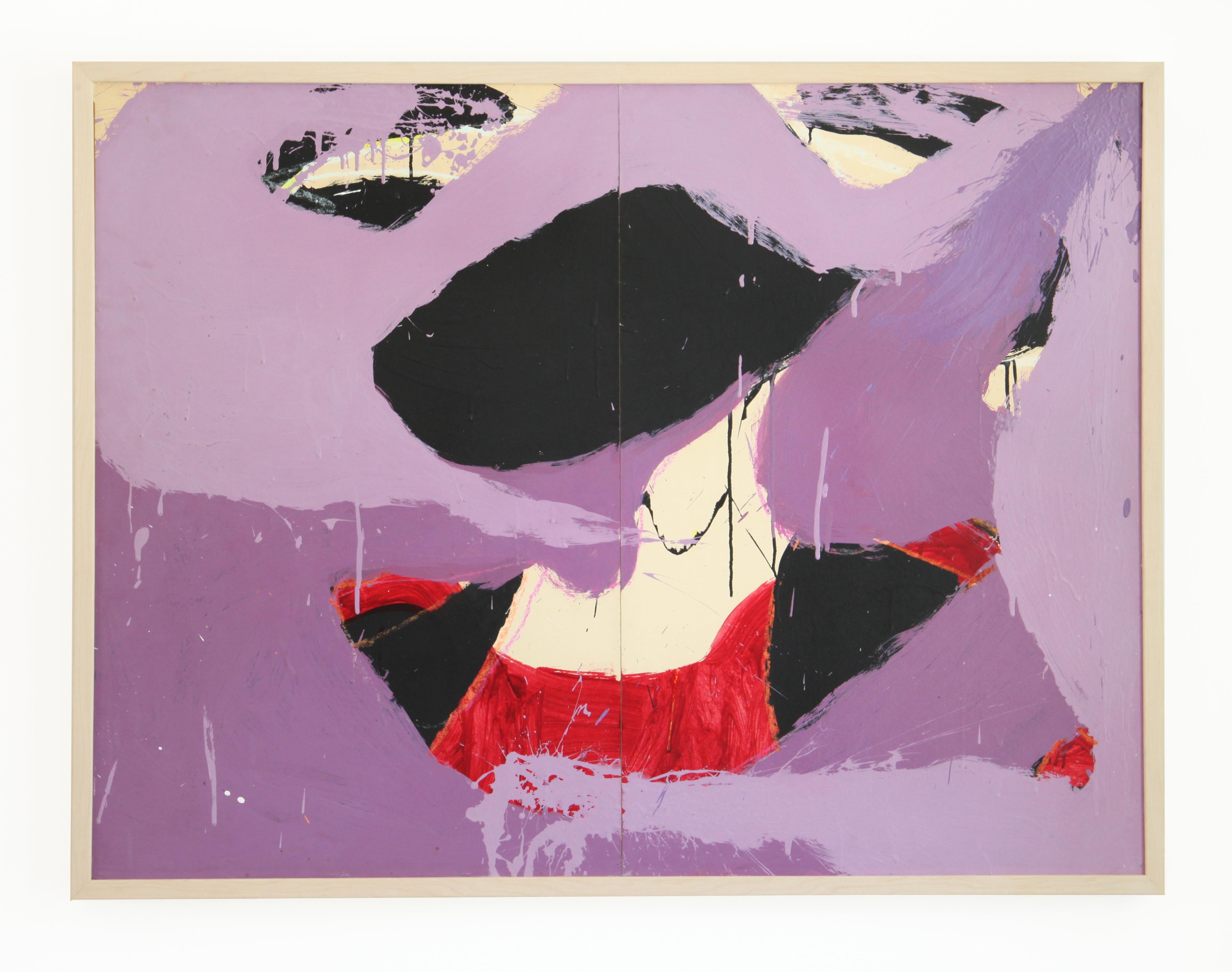
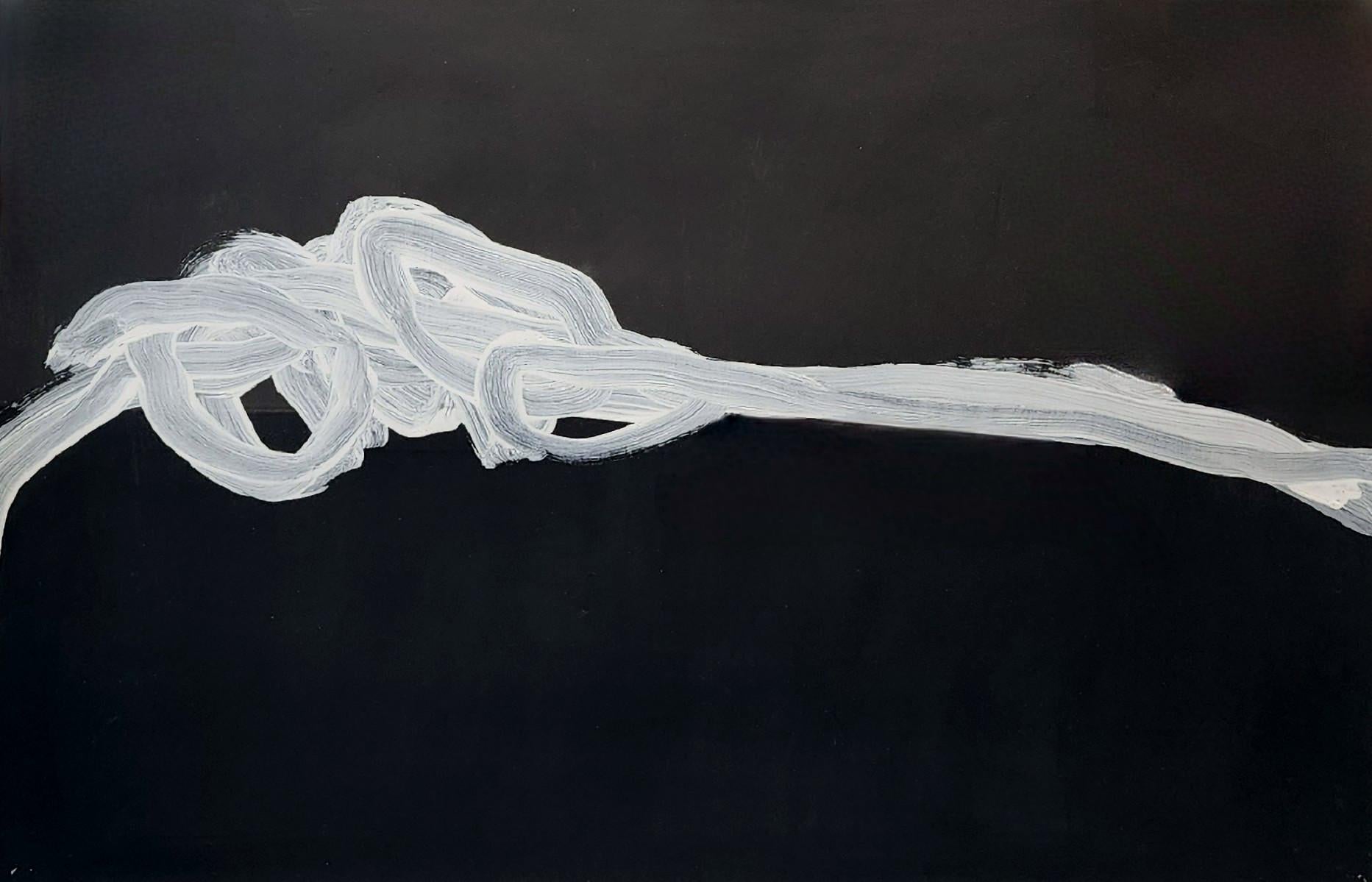

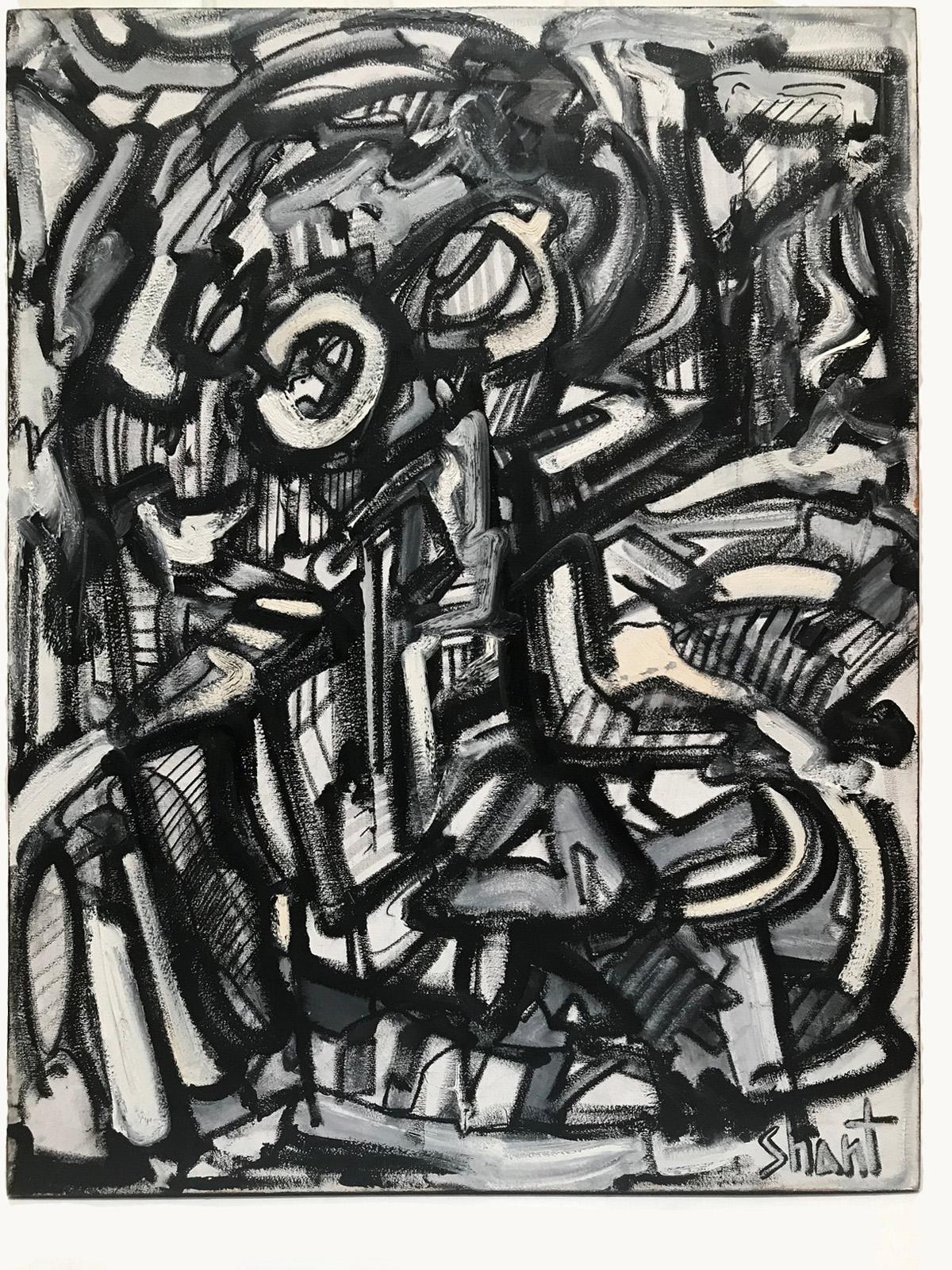
![Untitled 08 [Remains of the Remains 08] - Abstract Painting, Black, White](https://a.1stdibscdn.com/zsolt-berszan-paintings-untitled-08-remains-of-the-remains-08-abstract-painting-black-white-for-sale/a_6863/1643146245890/Untitled_08_oil_on_canvas_200x140cm_2019_master.jpg)
